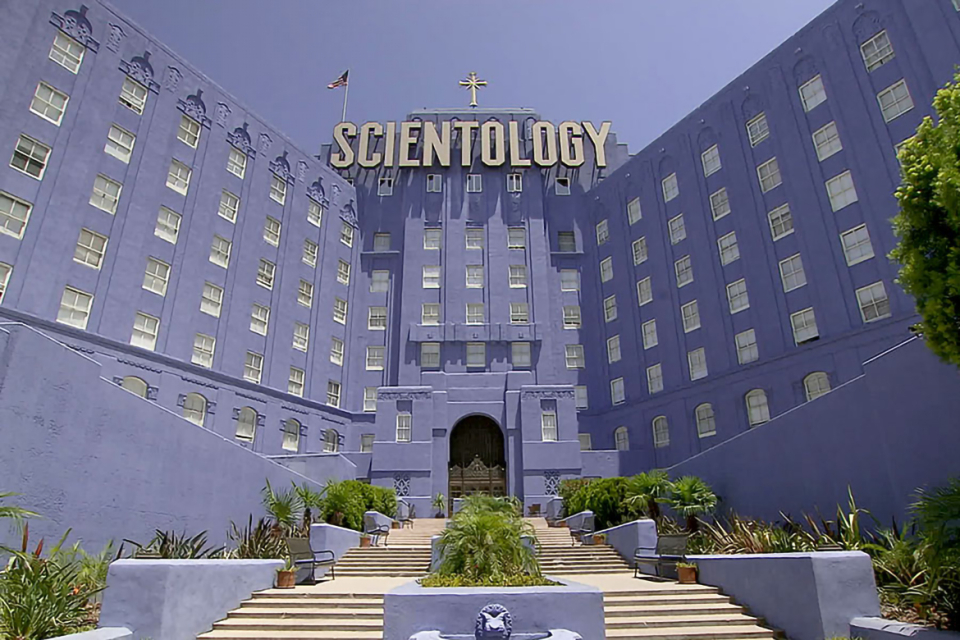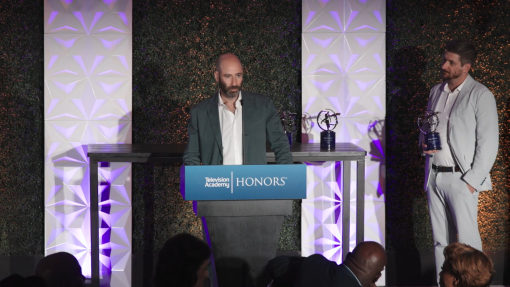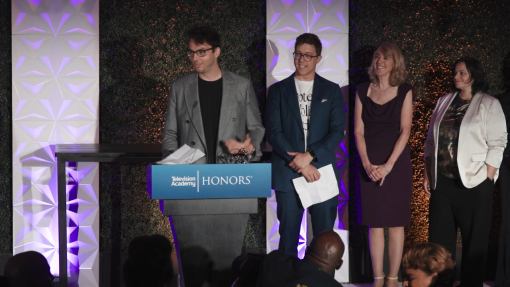What drives belief?
Why have humans fought wars, given up all they own, even martyred themselves in the name of a particular God or religion? And what happens when one man sets out to create a religion, asking his followers to pay for the revelation of the faith's deepest secrets?
These are some of the questions addressed in Going Clear: Scientology and the Prison of Belief. Based on Lawrence Wright's bestseller of the same name, and produced and directed by award winning documentarian Alex Gibney, the documentary explores the origins of L. Ron Hubbard's creation, its followers, and, especially, what happens to those who choose to leave.
Hubbard was a prolific science fiction writer in the 1950s when he wrote a book called Dianetics: The Modern Science of Mental Health.
Presented as a self-help book, it was an immediate bestseller, making Hubbard an instant celebrity and drawing people from all walks of life to study his "new" therapy, essentially a mash-up of Freudianism, Buddhism, hypnosis, and a smattering of other philosophies. Citing "extensive research," which was never documented, he offered his new therapy as a way to combat a variety of mental ills.
Hubbard founded the Hubbard Dianetic Research Foundation to promote his theories. When the Dianetics fad waned, however, he was forced to regroup, and came back with the Church of Scientology.
Scientology at its core was basically the same as the original Dianetics, in that seekers worked with an "auditor" to come to grips with past traumas. In its new incarnation, however, Hubbard added in the technology of the electropsychometer, which he branded as the Hubbard Electrometer, or E-Meter. With the help of this device, Hubbard claimed to have discovered the source of the human soul.
Creating a whole new vocabulary to encompass his ideas, he called newcomers to his organization "pre-clears," whose goal through Scientology's teachings was to become "clear," free of past and past life encumbrances. In the auditing sessions, pre-clears talked to their auditors, who kept an eye on the needle on the e-meter to see when the subject had released the trauma of the past.
In the process, the subject revealed every deep, dark secret he or she possessed, giving the church knowledge of each person beyond what they might share with anyone else.
Hubbard incorporated The Church of Scientology in 1954, and was granted tax-exempt status in 1956.
As the movement grew, so did Hubbard's output of books detailing the intricacies of the philosophy. He posited a creation myth that included an alien overlord and Earth as a prison planet inhabited by "thetans," disembodied souls who are the cause of all human suffering. Working with auditors in a hierarchy of levels, church members could rid themselves of the thetans attached to them in order to become clear.
Each level moving toward clear came with a monetary cost. Once a person joins the church, he or she will work through each level, and then pay to go on to the next. As the levels rise, so does the cost. Those who have achieved the higher levels of clarity have often spent tens of thousands of dollars to get there. Scientology not only seeks to clear one's soul, but also to own it.
In Going Clear, Gibney speaks at length to several people who have left Scientology, often after many years of abuse by the church and a great deal of struggle and harassment after leaving.
Writer-director Paul Haggis is one of the central figures in the film, describing at length what drew him to the church, why he left, and what has happened to him since.
Like many people, Haggis was going through a rough period in his 20s, and was searching for something to believe in that would help him through the tough times. He came across a Scientologist who promised just that, and he began to go to auditing sessions. Little by little, he and his wife were drawn into the church, which promised him not only spiritual belonging, but material success, as well.
As Haggis rose through the levels of Scientology's teachings, his career was also on the rise, for which the church took credit. However, as he got deeper into the mythology of Scientology, he began to question some of the ideas, particularly the thetans, and Xenu, the galactic overlord.
When he asked those questions, he was met with first silence, and then threats. Finally, Haggis and his wife left the church and were subsequently named as "Suppressive Persons," i.e. enemies of Scientology. Former friends from the church were not permitted to speak to them.
Others who were even more deeply involved and later left suffered both while they were in the church and afterwards. Spanky Taylor was a Scientology insider, believing that she was doing good in the world. She joined the church's Sea Org.
According to the church's own web site: "The Sea Organization is a religious order for the Scientology religion and is composed of the singularly most dedicated Scientologists — individuals who have committed their lives to the volunteer service of their religion. … Members of the Sea Organization are therefore wholly responsible to the Church of Scientology to which they are assigned and are responsible, as are all other staff, to officers and directors of that Church."
One of Taylor's main jobs at first was as a liaison to John Travolta, one of the church's most visible supporters. Eventually, she was removed from that position without explanation to either her or to Travolta and moved onto one of the Sea Org ships.
As a member of Sea Org, Taylor was separated from her daughter, as being with one's children took focus away from the church. The children were kept at a separate facility, where they were indoctrinated into Scientology's teachings as they grew up. Taylor was also forced to work long hours, often with as little as three hours sleep, even when she was pregnant.
The breaking point for Taylor came when she went to visit her daughter and found her sick and covered in filth. She wrangled permission to make a telephone call and called a friend to come pick her up. She described getting into her friend's car with her child and taking off, with Scientology members chasing after the car to try to stop her.
The documentary also interviews former church officials and presents extensive documentation of church practices and abuses. It is, perhaps, the most hard-hitting exposé of a religion in recent memory. For his efforts, Gabney has received three Primetime Emmys, a Writers Guild of America Award, and the Peabody Award. The Television Academy is proud to recognize Going Clear: Scientology and the Prison of Belief with its Television Academy Honors Award.
Experience the touching moments with photo galleries and presentations/acceptance speeches from the Ninth Annual Television Academy Honors celebration.









